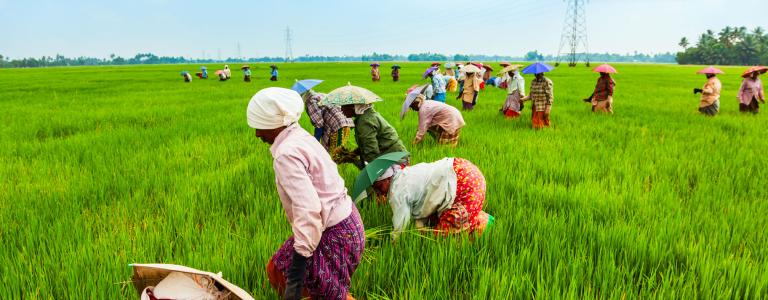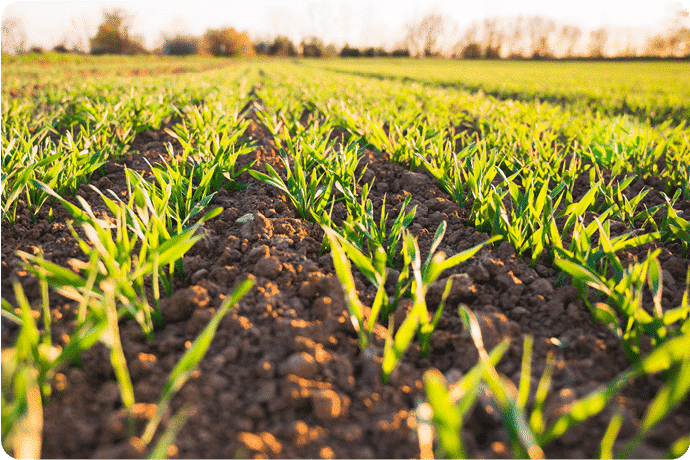Technologies in Agriculture: Smart Farming Techniques for Better Yields
Technologies in Agriculture: Smart Farming Techniques for Better Yields
Blog Article
Enhance Agricultural Performance With High-Quality Water Soluble Polymers
These polymers offer a variety of benefits that can transform conventional farming methods, from improving water retention and efficiency to optimizing soil framework and nutrient delivery systems. By harnessing the power of ingenious polymer solutions, farmers can possibly unlock new pathways towards achieving higher plant returns while mitigating ecological effects.

Advantages of Water-Soluble Polymers
Water-soluble polymers use a wide variety of advantages in farming applications due to their enhanced water retention homes and ability to boost soil structure. Agriculture. These polymers, when added to the dirt, can substantially boost water holding capacity, decreasing the frequency of irrigation needed by plants. By developing a gel-like compound when mixed with water, water-soluble polymers develop a reservoir that gradually releases moisture to plant origins, guaranteeing a more regular water throughout dry spells
Furthermore, these polymers aid in stopping soil erosion by binding dirt fragments together, thus boosting soil structure and stability. Improved soil framework permits much better root penetration and oygenation, advertising healthier plant development and greater crop returns. Water-soluble polymers also help in nutrient retention by minimizing leaching, making sure that necessary nutrients continue to be readily available to plants for a longer duration.
Improved Water Retention and Effectiveness
Enhancing agricultural water retention and effectiveness through the incorporation of sophisticated polymer modern technologies has ended up being a vital focus in modern-day farming practices. Water-soluble polymers play a crucial duty in enhancing dirt structure, improving water infiltration, and decreasing water dissipation rates. By developing a thin film on the soil surface, these polymers help to stop water drainage and increase the dirt's water-holding ability, guaranteeing that plants have access to an appropriate water.
Furthermore, making use of high-grade water-soluble polymers can substantially reduce the frequency of irrigation, as they improve the soil's capacity to retain wetness for longer durations. This not just preserves water however likewise lowers the power and labor expenses related to watering methods. In addition, improved water retention and efficiency result in much better nutrient uptake by plants, leading to enhanced plant yields and total agricultural efficiency.
Improved Nutrient Delivery Solution
Provided the considerable impact of high-grade water-soluble polymers on boosting water retention and performance in agriculture, the emphasis currently moves towards optimizing nutrient delivery systems to further enhance crop development and return. Boosted nutrient delivery systems play an essential duty in making sure that plants get the essential nutrients in a type that is easily available for uptake, promoting their overall wellness and productivity. By including water-soluble polymers right into nutrient delivery systems, the performance of nutrient uptake by plants can be dramatically enhanced.
One key advantage of making use of top quality water-soluble polymers in nutrient delivery systems is their capacity to regulate the launch of nutrients, making certain a regulated and constant supply to plants over an extended duration (Agriculture). This regulated launch system aids stop nutrient leaching and runoff, consequently optimizing nutrient usage by crops and minimizing environmental influence

Dirt Structure Optimization Strategies
Maximizing dirt structure is vital in contemporary agriculture for optimizing crop returns and advertising lasting land administration methods. Soil framework optimization strategies play an important role in ensuring that dirt provides a suitable setting for plant growth. One key technique is the addition of raw material, such as compost or manure, which helps boost dirt framework by improving its water-holding capability and nutrient retention.
Moreover, exercising minimal husbandry or no-till farming can stop soil compaction and promote the growth of a healthy and balanced dirt structure. Cover cropping is an additional reliable method that includes planting crops specifically to safeguard and boost the soil, avoiding erosion and improving soil framework.
In addition, carrying out plant turning approaches can assist break pest and disease cycles, while likewise enhancing soil framework with the differing origin structures of different crops. In general, using these dirt structure optimization methods can lead to increased farming efficiency, reduced ecological influence, and long-lasting sustainability in farming methods.
Lasting Solutions for Plant Yields

To resolve the obstacles of optimizing crop yields while promoting sustainable land monitoring methods, exploring lasting options comes to be crucial in modern-day farming. Implementing lasting agricultural practices is critical for making certain lasting food safety and security and environmental preservation. One sustainable solution for enhancing crop yields is the use of precision agriculture methods. By leveraging modern technology such as GPS, sensors, and information analytics, farmers can maximize the use of sources like water, fertilizers, and pesticides, bring about enhanced efficiency and performance.
Additionally, promoting plant rotation and cover cropping can help keep dirt wellness, minimize disintegration, and improve nutrition cycling, address eventually contributing to higher returns gradually. Integrated bug monitoring methods also play a crucial duty Learn More Here in sustainable plant manufacturing by lessening the dependence on chemical pesticides and promoting natural parasite control approaches.
Furthermore, investing in research and advancement for creating drought-resistant plant ranges and climate-resilient farming techniques can assist reduce the effect of environment change on agriculture while making certain constant returns when faced with ecological challenges. By embracing these sustainable options, farmers can achieve higher crop returns while guarding the health and wellness of the land for future generations.
Final Thought
In verdict, making use of top notch water-soluble polymers in agriculture uses various benefits such as improved water retention, boosted nutrient delivery systems, and optimized dirt structure. By carrying out lasting options for plant yields, farmers can significantly increase farming productivity and effectiveness. Agriculture. Water-soluble polymers supply a environmentally pleasant and affordable approach to boost the general efficiency of farming methods, resulting in much better results for both farmers and the atmosphere
These polymers use a variety of benefits that can transform traditional farming methods, from improving water retention and effectiveness to enhancing dirt framework and nutrient delivery systems.Additionally, these polymers help in protecting against soil erosion by binding soil bits with each other, link thereby improving soil structure and security. By developing a slim film on the soil surface area, these polymers assist to avoid water overflow and boost the soil's water-holding capacity, guaranteeing that plants have access to a sufficient water supply.
Dirt structure optimization strategies play a vital function in guaranteeing that dirt supplies a suitable atmosphere for plant development.In verdict, the use of premium water-soluble polymers in agriculture offers countless advantages such as improved water retention, boosted nutrient delivery systems, and enhanced dirt structure.
Report this page